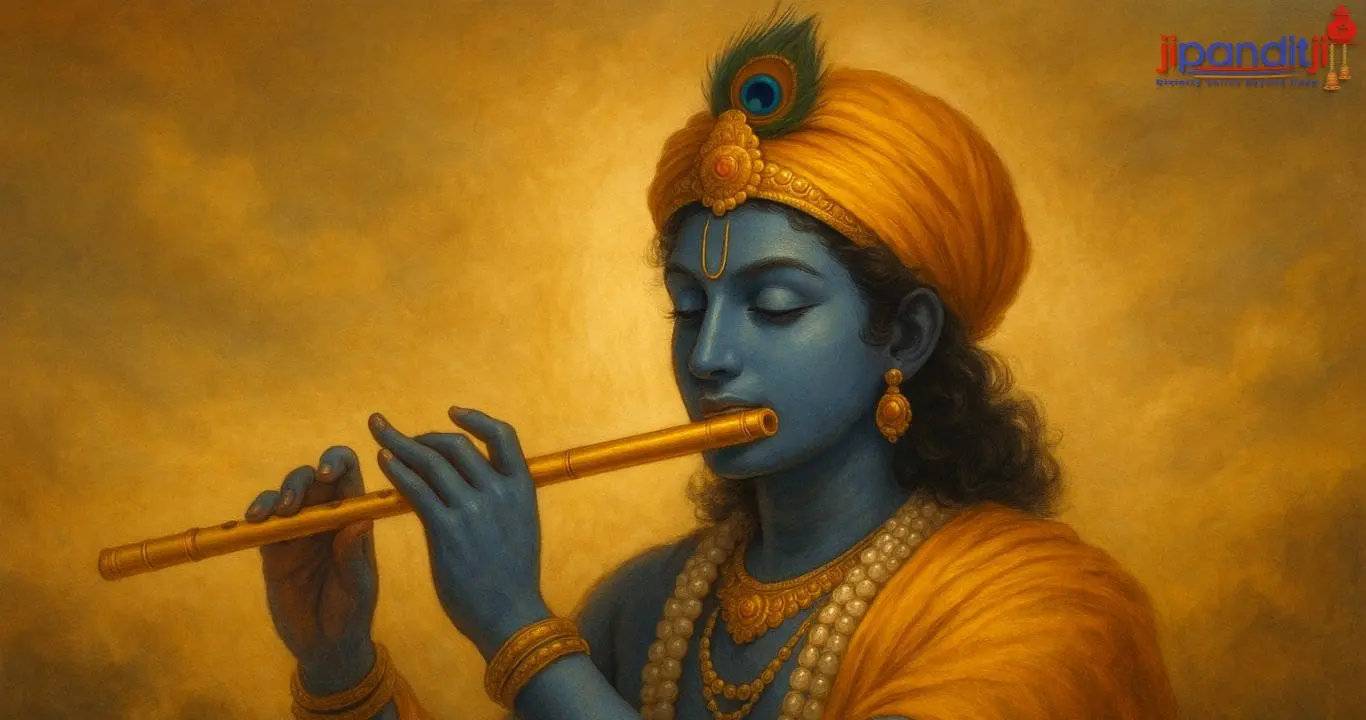7 Powerful Spiritual Meanings Behind Krishna’s Sacred Flute That Will Transform Your Understanding

The enchanting sound of Krishna’s flute has captivated millions of hearts for over 5,000 years. More than just a musical instrument, this sacred flute represents profound spiritual truths that can revolutionize your spiritual journey. Understanding these hidden meanings will unlock deeper connections to divine consciousness and transform your meditation practice forever.
The Universal Symbol of Divine Love
Krishna’s flute stands as one of Hinduism’s most powerful spiritual symbols. Ancient scriptures describe how the melodious notes would draw not only humans but also animals, trees, and rivers into divine ecstasy. This transcendent power represents the universal call of the divine that resonates within every soul.
The Bhagavata Purana mentions that Krishna’s flute music could stop flowing rivers and make cows forget to graze. These miraculous effects symbolize how divine love transcends all material attachments and worldly concerns. When we truly hear the inner call of spirituality, everything else becomes secondary.
7 Profound Spiritual Meanings of Krishna’s Flute
1. The Call of the Divine Soul
The flute’s haunting melody represents the eternal call of the divine within us. Just as the Gopis (cowherd girls) left everything to follow Krishna’s music, our souls yearn to respond to this divine invitation. This calling awakens our dormant spiritual consciousness and guides us toward self-realization.
Spiritual masters emphasize that this inner call manifests differently for each individual. Some experience it through meditation, others through devotional practices, and many through life’s challenges that redirect them toward spiritual seeking.
2. The Hollow Bamboo: Complete Surrender
Perhaps the most significant symbolism lies in the flute’s construction. Made from hollow bamboo, it represents the soul that has completely surrendered its ego. The bamboo must be entirely empty to produce beautiful music, symbolizing how we must empty ourselves of pride, desires, and attachments to become instruments of divine will.
This emptiness doesn’t mean becoming passive or lifeless. Instead, it represents dynamic receptivity – being completely available for divine grace to flow through us. When we achieve this state, our lives become expressions of divine beauty and purpose.
3. The Breath of Life: Prana and Divine Energy
Krishna’s breath flowing through the flute symbolizes prana, the life force that animates all existence. This represents how divine consciousness breathes life into the universe and into our individual souls. The music produced demonstrates the creative power that emerges when divine energy flows through a receptive vessel.
Yogic traditions teach that conscious breathing connects us to this universal life force. Regular pranayama practice helps us align with the same divine breath that flows through Krishna’s flute.
4. The Bridge Between Material and Spiritual Worlds
The flute serves as a bridge connecting the material and spiritual realms. Its earthly bamboo construction represents our physical existence, while the divine music it produces symbolizes transcendent consciousness. This teaches us that spiritual realization doesn’t require abandoning the material world but transforming our relationship with it.
This symbolism offers hope to modern practitioners who struggle to balance worldly responsibilities with spiritual aspirations. We can remain engaged in daily life while maintaining spiritual awareness.
5. The Power of Devotional Love (Bhakti)
The irresistible attraction of Krishna’s flute music represents the magnetic power of devotional love. Bhakti yoga practitioners understand that pure love naturally draws the soul toward the divine. The music symbolizes how authentic spiritual practice becomes effortless and joyful rather than forced or mechanical.
Research in positive psychology supports this ancient wisdom, showing that love-based spiritual practices produce more sustainable transformation than fear-based approaches.
6. Inner Harmony and Cosmic Order
The flute’s seven holes correspond to the seven chakras or energy centers in the human body. When Krishna plays, he activates these spiritual centers, creating perfect harmony within the devotee. This represents the balanced spiritual life where all aspects of consciousness work in perfect coordination.
This symbolism provides practical guidance for spiritual development. By focusing on chakra balancing through meditation, yoga, and conscious living, we can achieve the inner harmony represented by Krishna’s flute music.
7. The Song of Creation Itself
Ultimate Vedantic philosophy identifies Krishna’s flute with the primordial sound (Om or AUM) from which all creation emerges. The continuous, flowing melody represents the ongoing creative process of the universe. Every note symbolizes divine consciousness manifesting as the phenomenal world.
This profound symbolism connects Krishna’s flute to universal spiritual principles found across traditions. The concept of creation through divine sound appears in Christianity (“In the beginning was the Word”) and Islam (the divine command “Kun” meaning “Be”).
Practical Applications for Modern Spiritual Seekers
Understanding Krishna’s flute symbolism offers practical benefits for contemporary spiritual practice. First, it provides a framework for understanding the spiritual journey as a gradual emptying of ego and filling with divine consciousness. Second, it offers guidance for developing receptivity through meditation and surrender practices.
Many practitioners report that contemplating these symbols during meditation deepens their experience significantly. The imagery of becoming a hollow flute through which divine music flows provides a powerful visualization technique for spiritual development.
The Transformative Power of Sacred Symbolism
Krishna’s flute demonstrates how sacred symbols can serve as bridges between intellectual understanding and direct spiritual experience. When we move beyond mere conceptual knowledge to embody these teachings, profound transformation becomes possible.
Contemporary neuroscience supports this ancient wisdom, showing that symbolic thinking activates different brain regions than analytical thought, potentially facilitating mystical experiences and expanded consciousness.
Answering the Divine Call
Krishna’s sacred flute offers timeless wisdom for modern spiritual seekers. Its symbolism teaches us that spiritual realization requires complete surrender, receptivity to divine grace, and willingness to become instruments of higher consciousness. By understanding and embodying these teachings, we can transform our spiritual practice from mere ritual to authentic divine communion.
The next time you hear flute music, remember these profound meanings. Allow the sound to remind you of your own potential to become a vessel for divine expression. Start today by practicing conscious breathing, cultivating surrender, and listening for the subtle call of your own inner Krishna.

